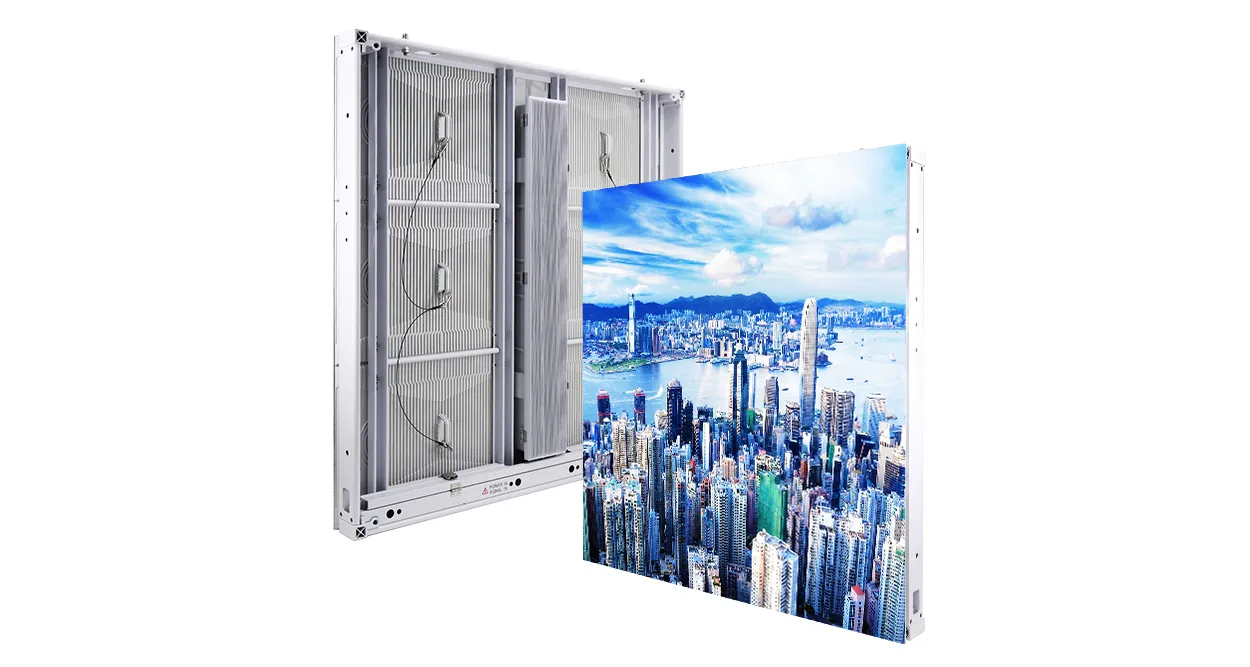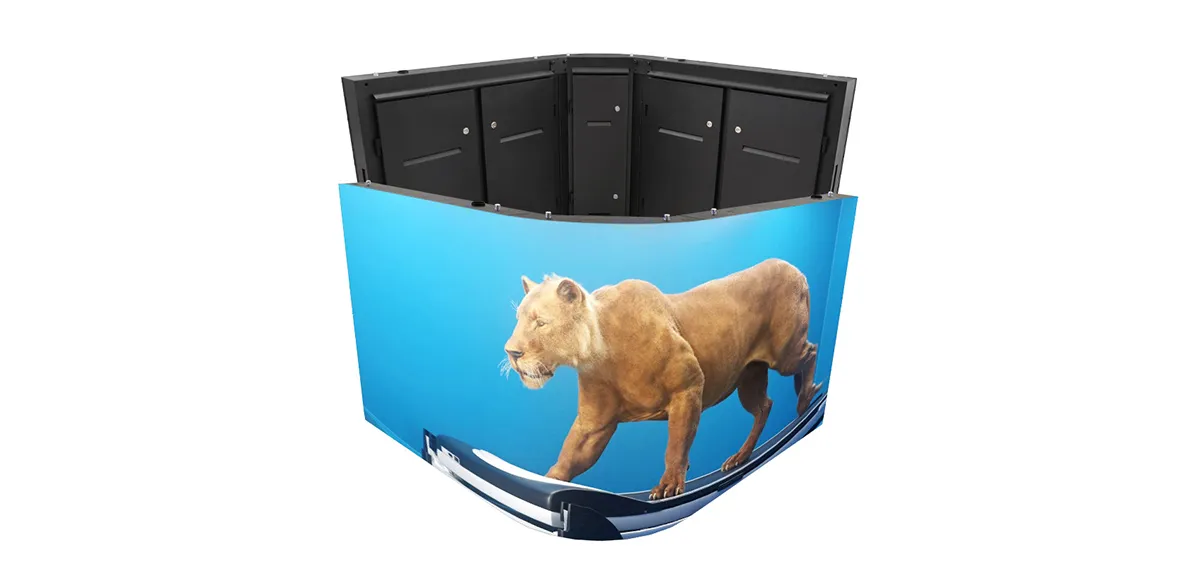3D Billboard Recommendation
EagerLED 3D LED display features high grayscale, high resolution, and high refresh rate,bringing audiences an excellent Naked-3D visual effect.
2025 New LED Screen Price for You
3D Digital Billboard Examples
3D Cat Billboard in Tokyo
The Shinjuku cat is a giant billboard with 3D technology located in Shinjuku,Tokyo. The 3D cat billboard adopts advanced 3D technology to give pedestrians an illusion that a cat is standing in the building to look downward. Shinjuku became one of the most popular places for travelers.
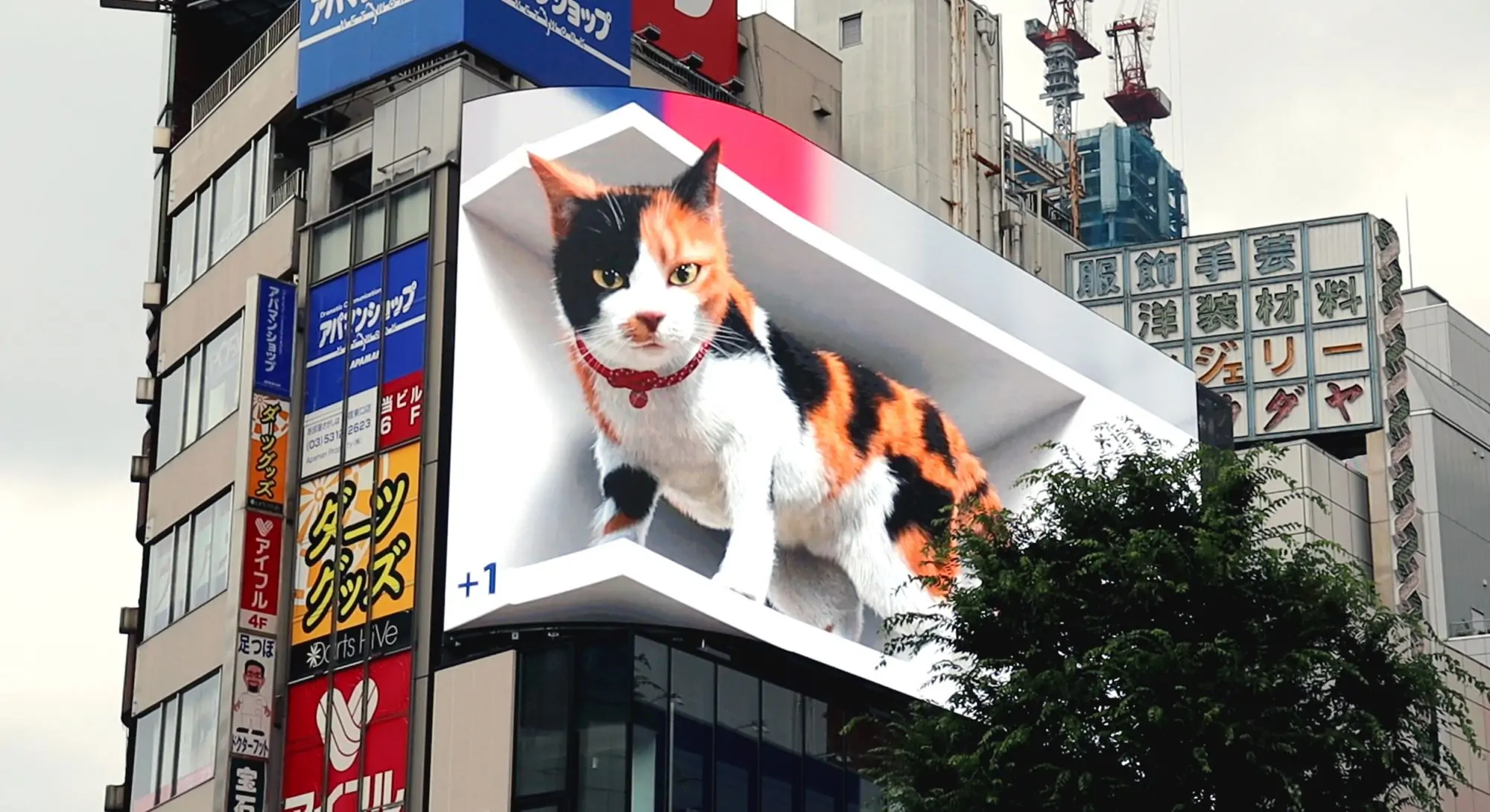
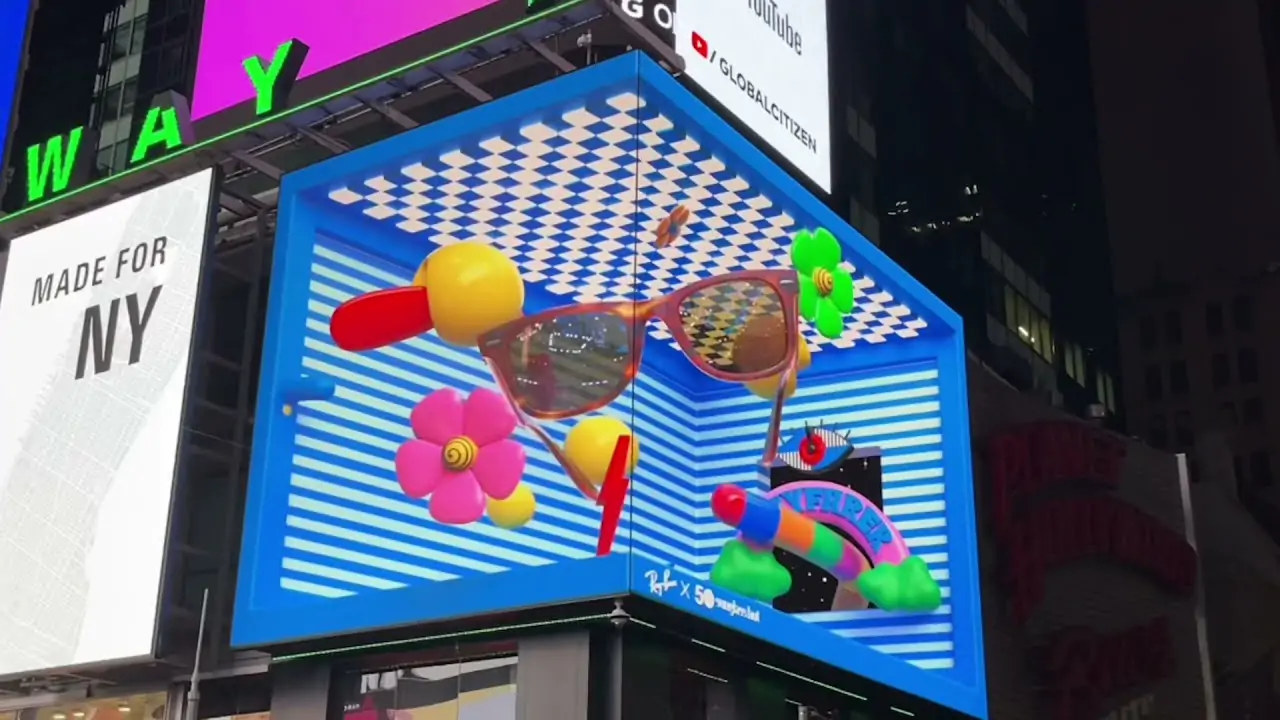
Times Square 3D Billboard
With its high audience coverage and exposure rates, the Times Square 3D Billboard can be considered the most famous OOH advertisement example in the world. It attracts over 174 million visitors every year.
Coca-Cola 3D LED Billboard in New York
In New York Times Square, the world’s very first robotic 3D screen was installed. The Coca-Cola 3D LED display uses 1,760 LED screens which are choreographed to move independently and create a unique depth and motion experience with an advertising dynamic.
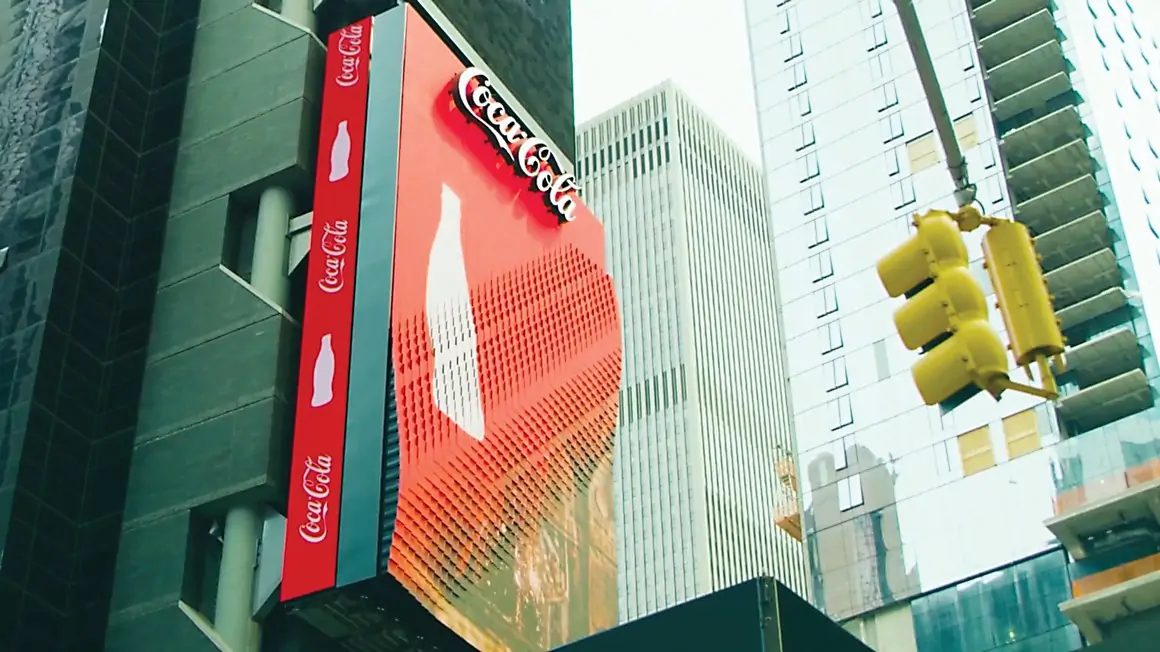
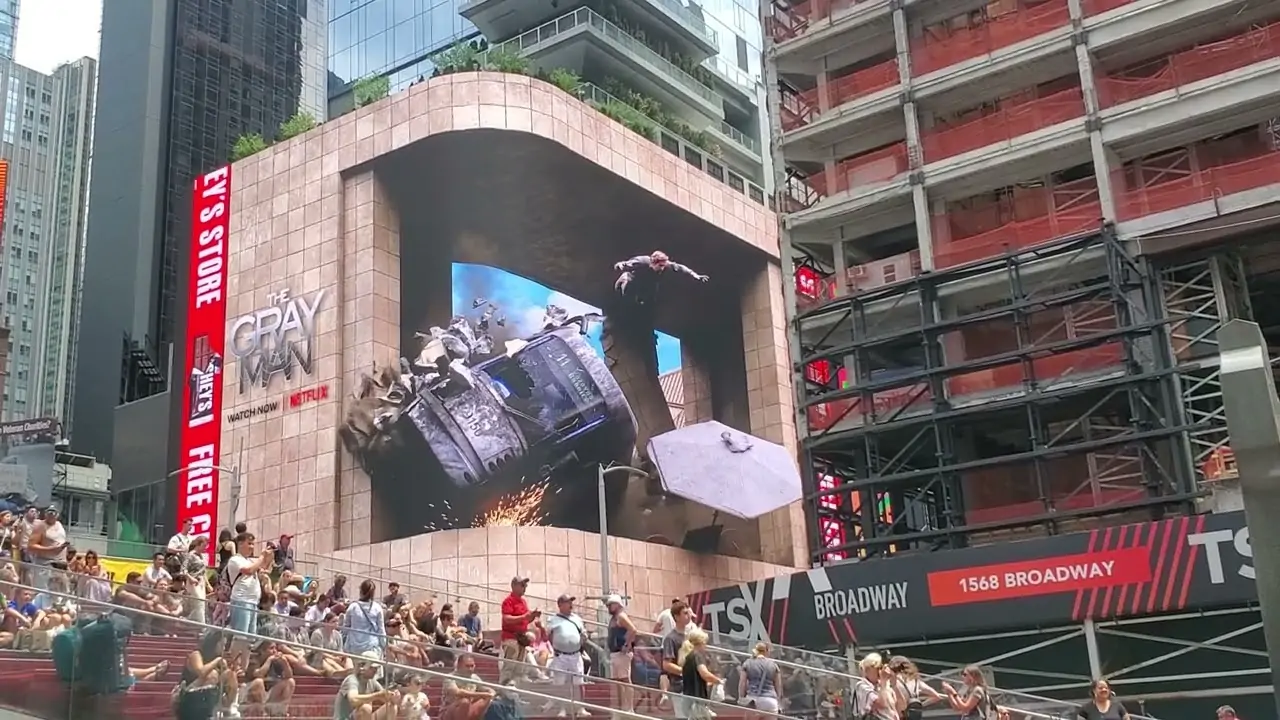
Netflix 3D LED Display in Times Square
The Netflix 3D LED display is a billboard, or an advertising display, that uses 3D technologies to create a visually stunning experience. It promotes Netflix content such as TV shows, movies, and original series. These billboards make use of visual effects and 3D projects to create the illusion that the content is floating or popping out from the screen.
Why Choose Us
2025 New LED Screen Price for You
3D Billboard Fast Guide: Everything to Know!
When it comes to the 3D billboard, you must figure out the Coca-Cola 3D billboard in Times Square, cute cat 3D advertising in Tokyo, and Nike 3D LED displays in Shinjuku. You may be confused about how this 3D digital billboard makes such impressive 3D advertising to passers-by and why it is essential to the ooh advertisement. Everything you want to know is in this post.
Table of Content
- 1. ما هي اللوحات الإعلانية ثلاثية الأبعاد؟
- 2. كيف تعمل لوحة الإعلانات LED ثلاثية الأبعاد؟
- 3. لماذا شاشة LED ثلاثية الأبعاد is هل هذا هو مدى أهمية الإعلانات الخارجية؟
- 4. كيفية صنع لوحة إعلانية ثلاثية الأبعاد؟
- 5. ما هو سعر لوحة الإعلانات ثلاثية الأبعاد؟
- 6. العوامل التي يجب مراعاتها عند اختيار شاشة LED ثلاثية الأبعاد
- 7. لوحات إعلانية ثلاثية الأبعاد مقابل لوحات إعلانية ثنائية الأبعاد التقليدية
- 8. أول لوحة إعلانية آلية ثلاثية الأبعاد وشاشة سينمائية ثلاثية الأبعاد من إنتاج شركة Word
- 9. أسئلة وأجوبة
- 10. EagerLED توصية لوحة إعلانية ثلاثية الأبعاد
- 11. اختتام
1. What are 3D Billboards?
The 3D billboards combine high-resolution LED screens and advanced 3D rendering technology to create depth and three-dimensional image effects, without the need for professional glasses. Compared with traditional 2D billboards, this 3D LED screen offers a realistic 3D visual experience, significantly attracting the attention of pedestrians and improving advertising effects.
2. How Does 3D LED Billboard Work?
Our naked eye 3D working principle is the use of human left and right eyes to receive different positions of the image, and then the brain will be superimposed on the information of the two images fusion, to form a picture not only up-down, left-right, but also before-after and near-far with a three-dimensional effect of the picture. The naked eye 3D effect is actually a simple 2D LED display plus 3D content.
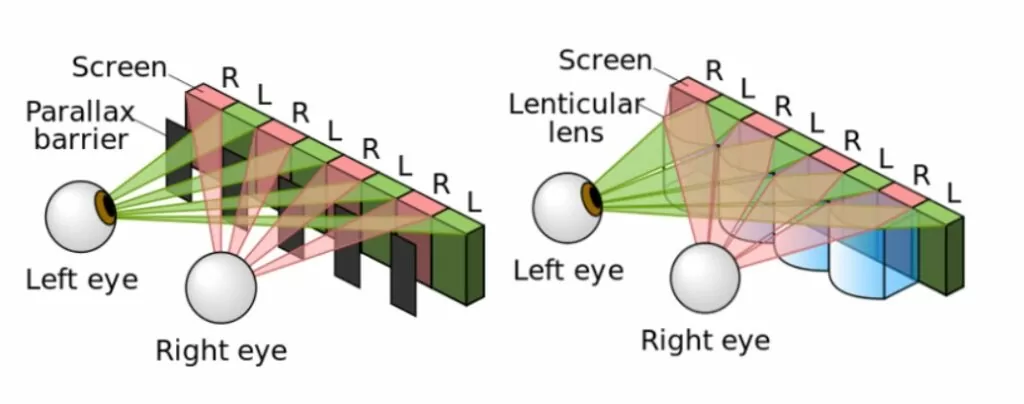
So 3D billboards allow users to see the three-dimensional effect through flat two-dimensional pictures or videos with the naked eye and do not need to use any external equipment.
But the naked eye 3D effect is not naked eye 3D holographic projection, naked eye 3D billboards have the requirement of viewing angle and distance, while naked eye 3D holographic projection has no angle and distance limitations.
3. Why 3D LED Screen is So Important for OOH Advertising?
Businesses can benefit from 3D LED billboards that offer unparalleled immersive OOH advertising possibilities. They not only help businesses reach a large audience, but they do so in a professional manner. We will shed light on its benefits for OOH advertising.
3.1 Increased Engagement
3D LED displays with naked eye capture the attention of viewers and offer a memorable and unique experience. This increased engagement can have a significant impact on advertising campaigns by attracting more attention and increasing brand recognition, ultimately driving customer action.
3.2 Immersive Storytelling for Brands
Interactive features allow viewers to engage actively with the content. This turns the billboard into an interactive communication channel. It could be touch-sensitive surfaces or motion sensors. Or it could be augmented reality experiences which respond to viewer movements.
3.3 Interactive Functions
By taking advantage of the compelling nature of 3D visuals that are visible to the naked eye, brands can create immersive storytelling experiences that leave a lasting impact on their audience. This technology enables the creation of captivating narratives and conveys messages or products in a visually stunning way.
3.4 Stand Out in an Urban
Many billboards are dotted along the busy city streets. The large-area screens, with their novel 3D visual effects that can be seen by anyone without glasses, are a great way to break through the clutter of traditional billboards. Brand messages will not only be seen, but also remembered. This visibility boost is especially beneficial for brands that want to be visible in areas with high traffic and cityscapes.
3.5 Make an Impression You’ll Never Forget
The Naked-Eye 3D LED Billboard makes a lasting impression on the audience. Brands can leave a lasting impression on their audience through a combination of innovative design, strategic placement, and technological innovation.These billboards encourage positive relationships between customers and brands by providing an unforgettable visual experience.
3.6 Versatile Applications
Naked eye 3D LED screens have many applications beyond outdoor advertising. These displays can be used in retail environments, entertainment venues, museums and product launches. They also provide engaging presentations and interactive content that help brands stand out from the competition.
4. How to Make a 3D Billboard?
By selecting the right type of 3D technology, carefully planning the installation, and continuously updating and maintaining the content, you can create an eye-catching and effective advertising tool. Below is the detailed interpretation of each step.
Set Your Objective: You should set your events’ objectives such as conveying a particular message, improving brand awareness, and advertising your products or services.
Choose a Suitable 3D Digital Billboard: You should consider the activity area, target audience, viewing distance, and 3D technology to choose a suitable 3D LED display. In addition, pixel pitch, refresh rate, and brightness determine the image quality of the 3D LED display.
Structure Installation: Consider whether it will be an outdoor or indoor installation. If you’re using a large curved 3D LED billboard, you will need a custom frame and flexible LED module.
3D Content Creation: Design the special 3D content such as a static 3D model or a dynamic 3D animation. You should render the 3D content in high definition to ensure it looks crisp on the 3D billboard. The motion sensors, cameras, or gesture recognition technologies can make interactive 3D content.
Content Management: You will need a CMS to manage and update the content on your 3D digital billboard. Ensure you have the right software to control playback on the LED screens or projection system. If using multiple screens or projectors, ensure that the content is synchronized to create a unified 3D effect.
Testing and Calibration:
Before the billboard goes live, test the content from different viewing angles to ensure the 3D effect works as intended. You may need to adjust the content’s positioning or rendering to align with the viewing angles.
Brightness and Contrast Adjustment: Set the brightness and contrast levels so that the 3D effect is clear and visible in various lighting conditions. Make sure the display is readable during the day and night.
Maintenance:
Regular Maintenance: 3D billboards, especially those with advanced LED panels or projection systems, require regular maintenance to ensure longevity and continued visual performance. This includes:
- Cleaning screens
- Checking hardware connections
- Updating software and content
- Ensuring proper calibration for the 3D effect
5. What is 3D Billboard Price?
The price of a 3D digital billboard varies on different elements. We will show you the influenced factors and prices in detail.
5.1 Factors Affecting the Price of 3D LED Screen
(1) Screen Size: The price of a small 3D billboard is lower than a large 3D digital billboard.
(2) Technology: If you want 3D LED billboards with high resolution, high pixel density, and special technology, the price of 3D LED billboard is relatively high.
(3) Indoor or Outdoor: Indoor 3D digital billboards and outdoor 3D LED displays have different requirements for waterproof levels. Outdoor 3D billboard is more expensive than indoor 3D LED screens.
(4) Duration: It is the video display time. The more time it takes to show the content, then the higher the price.
(5) Video Complexity: The 3D content itself is a major factor in the final visual effects. The level of visual realism is directly affected by how well the details are handled. This can be expensive.
(6) Competition: In high-demand areas, the competition will be fierce, which also will affect the price of 3D digital billboards.
5.2 The Price of Standard 3D LED Billboard
For smaller installations with basic 3D effects, the cost may be around $30,000 to $60,000, while larger, more advanced setups with auto-stereoscopic technology and high resolution can exceed $500,000.
Small Size(up to 10㎡): A 3D LED billboard with a relatively small display area (up to 10㎡) and a standard resolution (e.g., P10 or P8 pixel pitch) can cost around $30,000 to $60,000. This is typically used for indoor or smaller outdoor advertising.
Medium Size (10㎡to 50㎡): Large, high-resolution (P5 or P4 pixel pitch) billboards designed for high-traffic outdoor venues, such as Times Square or busy city streets, can cost $60,000 to $200,000 or more. These 3D LED displays are often capable of displaying sharper and higher quality 3D content.
Large Size(50㎡and above): Large 3D LED billboard (over 50 square meters), especially those with auto-stereoscopic 3D capabilities (glasses-free 3D), can cost from $200,000 to $500,000 or more. These large billboards are often used in iconic locations such as shopping malls, major city squares and stadiums.
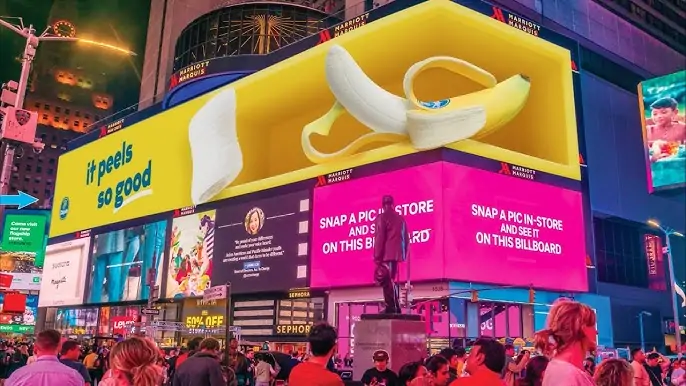
6. Factors to Consider When Choosing A 3D LED Display
If you want to choose the best 3D LED display, several factors should be considered to ensure that the 3D digital billboard meets the specific needs of the installation and delivers the desired performance. Here are the key factors to keep in mind:
Cost and Budget: You should consider the cost of technology, installation, content creation, and maintenance. Then you can set a budget according to applications, targeted audiences, and functions.
3D Billboard Size: Consider the available space and purpose to ensure the display can fit within the designated area, without compromising viewing angles or audience engagement.
Resolution and Pixel Pitch: Higher resolution displays (4K or 8K) provide clearer images, especially important for 3D content. Smaller pixel pitches (e.g., P3 or P2.5) provide better image quality.
Viewing Angle: The 3D effect is more visible at different angles if the 3D LED billboard has a wider view angle. Most 3D LED displays benefit from a viewing angle of at least 160°.
Refresh Rate and Brightness: A higher refresh rate (e.g., 120Hz or 240Hz) is critical for smooth 3D content, especially in fast-moving scenes. Look for a brightness level of 1,500 to 4,000 nits for outdoor use and 800 to 1,500 nits for indoor environments.
Installation and Maintenance: Consider how easy or complicated the installation process is. Look for a display with front access for easier maintenance and repairs, especially in high-traffic areas.
Durability and Weather Resistance: If the 3D LED display will be used outdoors, ensure it is weatherproof and durable, with an IP65 or higher rating for protection against dust and rain.
Reliable Supplier: Established LED display suppliers may offer a comprehensive warranty, good after-sales support, and professional technology service. Finding a reliable supplier is essential to choose the best 3D digital billboard.
7. 3D Billboards VS Traditional 2D Billboards
Before analyzing the difference between 3D billboards and traditional 2D billboards, we will simply interpret what is a 2D billboard and what is the key features.
7.1 What is A 2D billboard?
A 2D billboard is a traditional billboard that displays static or dynamic 2D images, graphics or text. The 2D billboards present content in a flat, two-dimensional format. These billboards can be printed (such as traditional paper or vinyl billboards) or digital (using LED or LCD screens).
7.1.1 Types of 2D Billboards
Static 2D Billboards: Traditional non-digital billboards that use printed images or posters.
Digital 2D Billboards: Billboards with digital screens that display a variety of static or animated 2D content.
7.1.2 Key Features of 2D Billboards
Flat Display: Visuals are presented physically or digitally on a flat surface without any illusion of depth or motion.
Content: Advertisements, messages or graphics are usually displayed in a 2D format. This content can be static (unchanging) or dynamic (changing over time, as in digital billboards).
Material: Traditional 2D billboards are typically made of vinyl or paper, while digital 2D billboards use LED or LCD panels.
Applications: Brand advertising, announcements or promotions in a variety of environments such as highways, city centers, shopping malls and public spaces.
Cost: 2D billboards are often more cost-effective than advanced 3D or interactive billboards, making them a common choice for outdoor and indoor advertising.
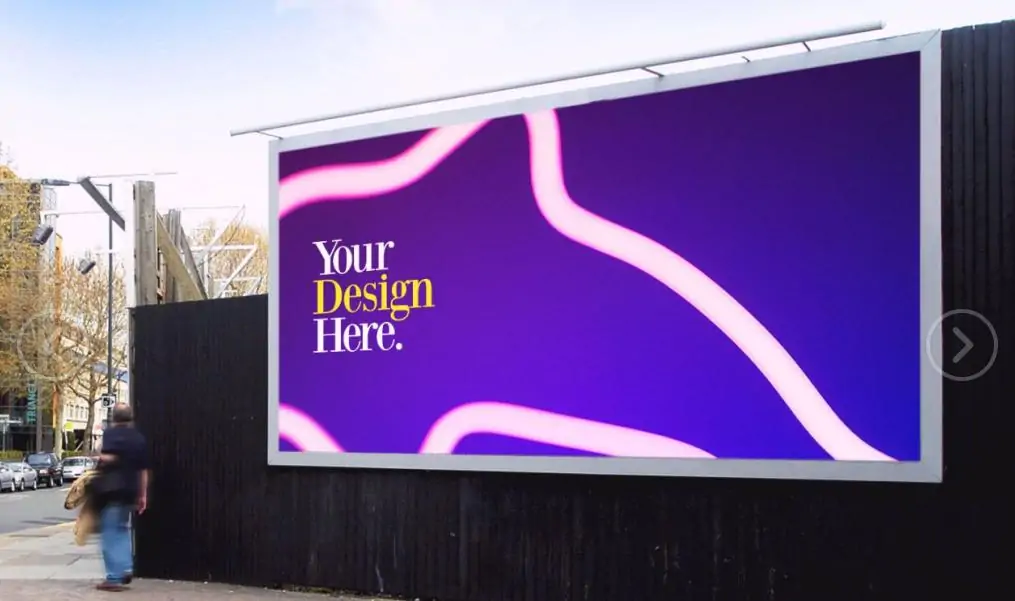
7.2 Difference Between 3D Billboards and Traditional 2D Billboards
The main difference between a 3D billboard and a traditional 2D billboard is the visual presentation and viewing experience. Here are the key differences:
7.2.1 Visual Depth and Dimension
3D LED Screens: The 3D digital billboards create a sense of depth and dimension, often using advanced technologies such as autostereoscopic (glasses-free 3D) displays or physical elements that project a 3D effect. This makes the content appear to pop out or appear to have volume, making the visual experience more immersive.
2D Billboards: These are flat, with images or text displayed in two dimensions. There is no depth or illusion of three dimensions. The content is either static or moving (in the case of digital billboards), but always on a flat surface.
7.2.2 Technologies
3D LED Billboards: These rely on advanced technologies such as LED screens, holographic displays or autostereoscopic 3D (no glasses required) systems to create the illusion of depth. Projection mapping is another technology that can turn a flat surface into a 3D LED display.
2D Billboard: These billboards typically use simpler technologies, such as printed vinyl or LED displays, to display flat images or videos. Digital 2D billboards use standard LED or LCD screens without any depth enhancement technology.
7.2.3 Impact and Engagement
3D Digital Billboards: Due to their visual impact and dynamic nature, 3D billboards have a higher level of engagement. They are more likely to grab the attention of passersby and create a buzz, especially in high-traffic areas.
2D LED Displays: While still effective, traditional 2D billboards are more traditional and often less engaging. They are good for clear, direct messaging, but don’t have the same immersive impact as 3D LED displays.
7.2.4 Cost
3D Billboard: Because of the advanced technology and the need for specialized materials, such as high-resolution LED screens or projection mapping equipment, 3D billboards are often more expensive to produce, install and maintain. Costs can be significantly higher than traditional 2D displays.
2D Billboards: Traditional 2D billboards are more cost-effective and less expensive to produce, install and maintain. Even digital 2D billboards are typically less expensive than 3D digital billboards.
7.2.5 Applications
3D Billboards: They are best suited for high-traffic areas designed to attract attention and engage the audience, such as downtowns, entertainment districts and large-scale events. They are effective for promoting products, brands or experiences that benefit from a dynamic visual presentation.
2D Billboards: 2D billboards are common in both outdoor and indoor advertising and are widely used for simple adverts where a simple message or image is sufficient. They are common in areas such as motorways, bus stops and retail shops.
7.2.6 Maintenance
3D LED Billboard: Due to the advanced technology and high number of components (e.g., 3D projection systems, LED panels), maintenance can be more complex and costly.
2D Billboard: Maintenance is often simpler, especially for traditional print billboards. Digital 2D displays still require some maintenance, but it is often easier and less expensive than 3D setups.
Summary
| Feature | 3D Billboards | 2D Billboards |
|---|---|---|
| Viusal Effect | Depth and dimensionality, immersive |
Flat, 2D images or text |
| Technologies | Advanced tech (LED, projection, 3D effects) |
Traditional LED, printed materials |
| Engagement | Highly engaging, attracts more attention |
Passive, straightforward messaging |
| Cost | Higher cost for production and maintenance |
More affordable |
| Application | Urban areas, events, brand awareness |
Highways, retail spaces, clear messaging |
| Mainenance | Complex and costly |
Easier and less expensive |
8. Word’s First 3D Robotic Billboard and 3D Cinema LED Screen
8.1 The World’s First 3D Robotic Billboard
The first 3D robotic billboard measuring 210.22 ㎡(2,262 ft²) was completed on 8 August 2017 by the Coca-Cola Company (USA) in Times Square, New York, USA. The 3D billboard consists of 1,715 moving LED cubes and 245 static LED cubes. The total surface area of the visual display is 240.23 square meters (124 in²). Each cube extends 1.52 meters (0.18 in).
8.2 The World’s First 3D Cinema LED Screen
Samsung Electronics has debuted the world’s first 3D cinema LED screen at Arena Cinema’s Sihlcity theater in Switzerland, replacing projection-based cinema screens. 10.3 x 5.4 meters of on-screen content on the LED display will be enlarged with High Dynamic Range (HDR) picture quality, with all visuals rendered in ultra-sharp 4K resolution (4,096 x 2, 160).
9. FAQs
10. EagerLED 3D Billboard Recommendation
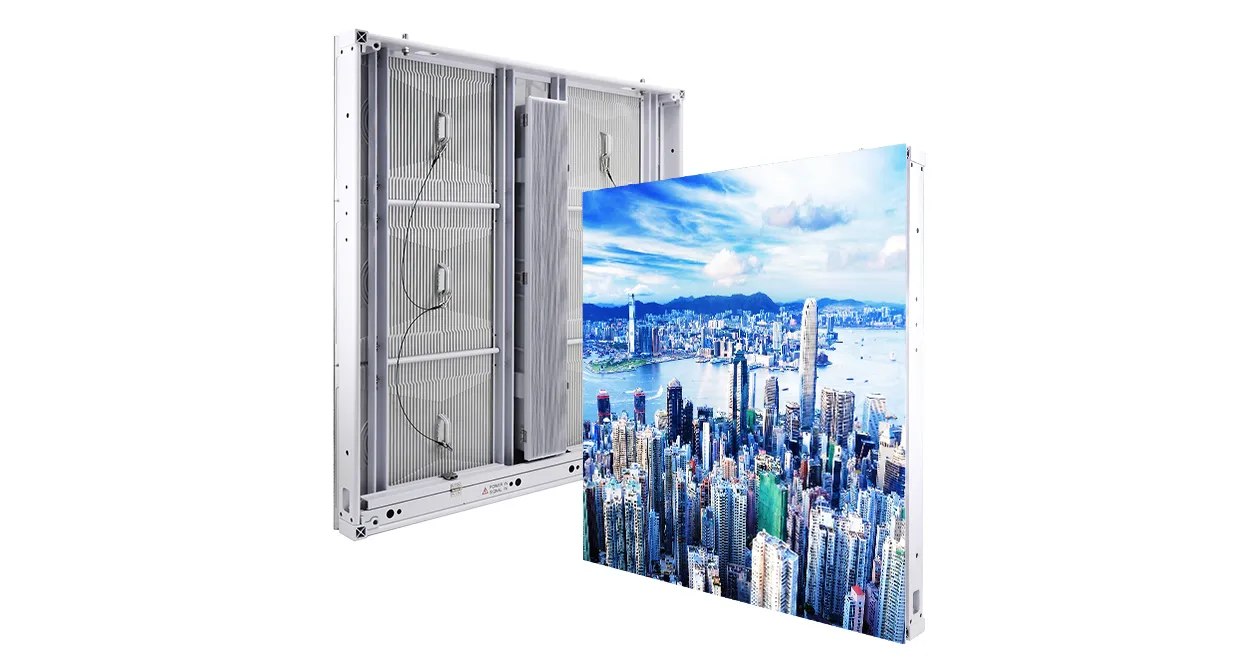
EagerLED EA3D-VR 3D Billboard
●Standout naked-eye 3D display effect
●Power and signal cables are hidden at the bottom of the LED display panel
●Built-in cutting-edge PCB and ICs
●Designed with radiators to achieve the best heat dissipation
●The all-white cabinet can minimize heat absorption under the sunlight
●Die-cast aluminum material reaches 5VB fire protection level
●Support front and rear service design
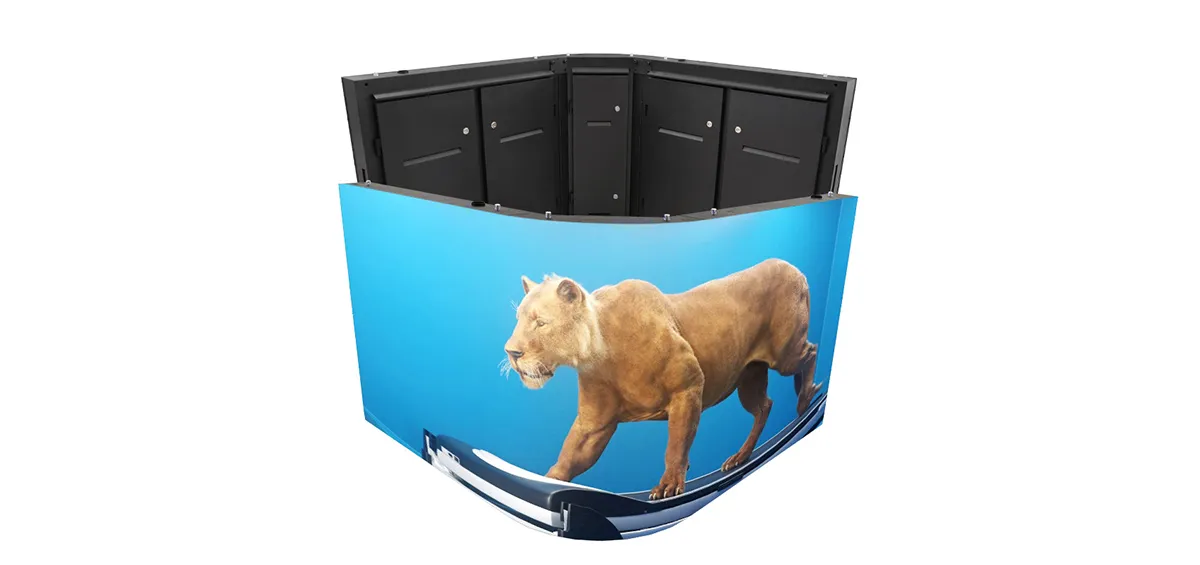
EagerLED EA160ES 3D LED Screen
●Standout naked-eye 3D display effect
●High quality PCB design greatly reduces power consumption
●Seamless splicing offers ultraflat and smooth display alignment
● 6000 CD/㎡ high brightness offers impressive visual effects
●Openable back cover for easy disassembly and maintenance
●IP65 protection level for all weather outdoor work
11. Conclusion
What is a 3D billboard and how does it work? I think you have known the answer after reading this post. Meanwhile, it is undoubtedly that 3D LED billboard is a future advertising trend to immerse audiences into your brand story.
Our EagerLED LED display manufacturer has 15 years of industrial experience and is equipped with a professional technical team and sales team. Just fill in the form to get your preferred price.

